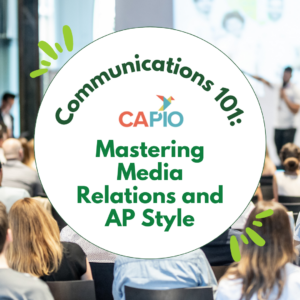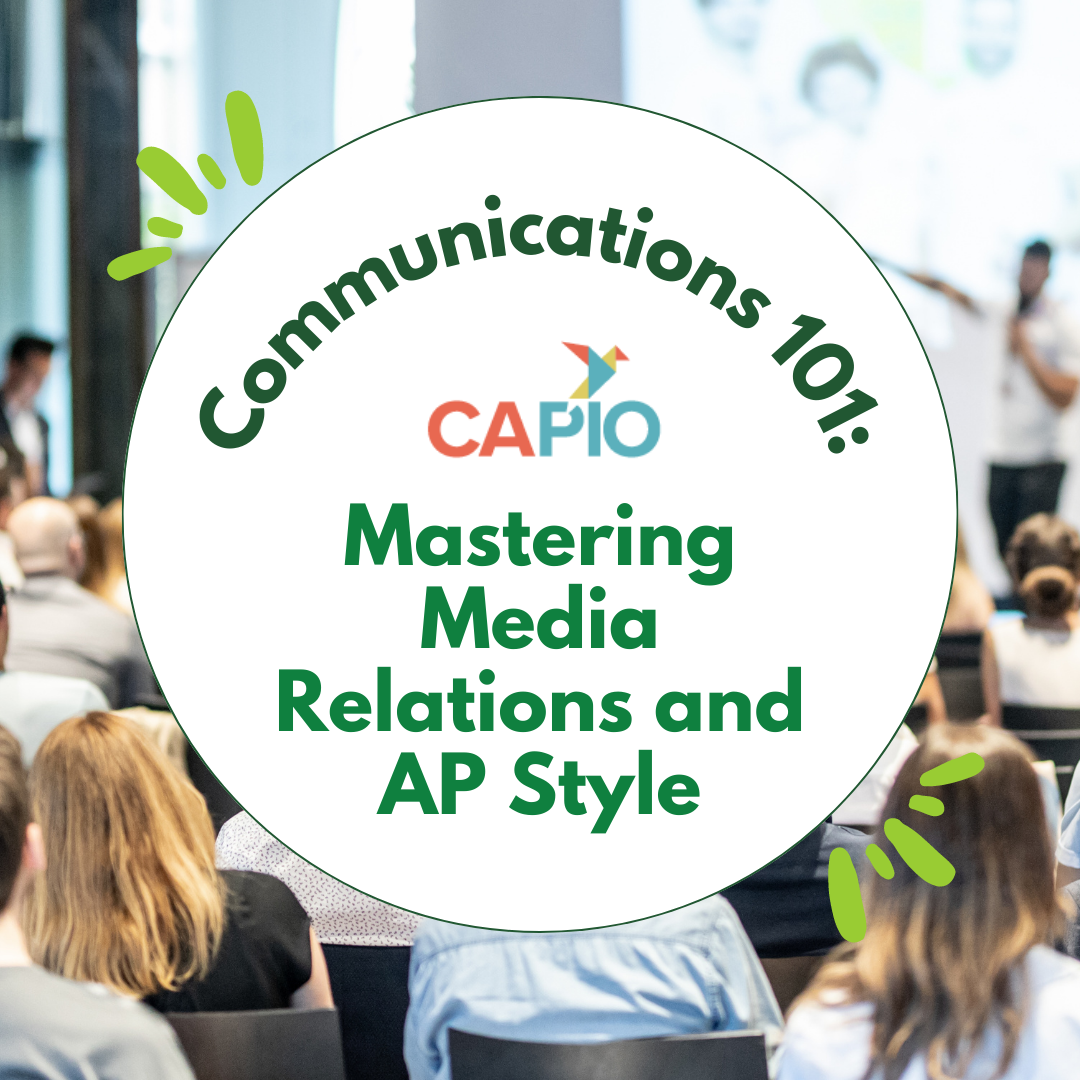Communications 101 for the Public Sector: Mastering Media Relations and AP Style
 In the realm of local government, effective communication strategies are vital for promoting initiatives, garnering public support, and ensuring transparency. However, in today’s competitive media landscape, where there are four times more PR professionals than journalists, capturing attention and securing coverage to reach residents can be challenging.
In the realm of local government, effective communication strategies are vital for promoting initiatives, garnering public support, and ensuring transparency. However, in today’s competitive media landscape, where there are four times more PR professionals than journalists, capturing attention and securing coverage to reach residents can be challenging.
Associated Press (AP) style expert and Tripepi Smith Principal Katherine Griffiths recently presented on engaging writing strategies and the importance of consistent, clear and correct writing styles at the California Association of Public Information Officials (CAPIO) Communications 101 Boot Camp. She was joined by David Vossbrink, the city of San Jose’s longtime airport and City Hall communications director, who shared tips and tricks on connecting with the media as a public spokesperson.
Here are a few key takeaways from boot camp—focusing on media relations and leveraging writing styles to effectively communicate with an agency’s constituents and their broader community:
- Building Credibility and Trust: In the public sector, building credibility and trust are essential for establishing strong relationships with journalists and the public. Be the reliable source of information by consistently providing accurate and timely updates. Cultivate relationships with journalists who cover government and public affairs, and ensure your communications are transparent and trustworthy. By consistently delivering reliable content, you can position yourself as a credible source and increase the chances of gaining media coverage. Make it easy for journalists to place your content without the need to edit for grammar and style issues.
- Adapting Stories for Public Interest: To generate interest in the public sector, it’s crucial to adapt stories in a way that resonates with the community and local publications. Consider the immediate impact, human-interest elements, or unique aspects of your initiatives. Highlight how your project addresses local needs or brings about positive change. By tailoring your storytelling to connect with the public’s interests and concerns, you increase the likelihood of attracting media attention and fostering community engagement.
- Making Sure the Public Can Understand You: Avoid using acronyms and jargon in your writing that could confuse community members. Remember, local government staff and officials are the ‘three percent’ that recognize a string of terms like “public hearing on zoning code amendment pertaining to nonconforming uses,” and our communities are the ‘97 percent’ that you’re trying to reach in your communication efforts. Shorten your sentences, use plain language, and speak directly to your audience. A custom style guide can offer easy-to-interpret guidelines that encompass AP style and the nuances of a particular agency or the preferences of a city manager or council member.
- Understanding the Wider Public Circulation: In the public sector, it’s important to recognize the diverse media landscape and understand how your story can reach a wider audience. Local publications often have limited resources and may be part of larger media conglomerates. Consider how your story aligns with their overarching themes, regional interests, or specific community demographics. By framing your pitch to address these considerations, you can increase the likelihood of your story gaining traction and reaching a broader public.
- Crafting an Engaging Lede: When pitching a story, your lede should capture the attention of both journalists and the public. Tailor your opening lines to reflect the specific challenges or opportunities faced by your community. Ensure your lede aligns with the tone and style of the publication you’re targeting, emphasizing the relevance and impact of your initiative.
- Utilizing Quotes and Narrative Perspective: Quotes are powerful tools in conveying the impact and significance of your initiatives. When incorporating quotes, focus on capturing the perspectives of stakeholders, community members, or elected officials. Avoid generic terms like “excited” and instead provide a narrative perspective that illustrates the potential outcomes or benefits of your project. By presenting a compelling narrative that resonates with the community, you can engage readers and make your story more compelling.
It’s an agency’s ability to deliver impactful narratives that foster transparency, community engagement and support for various initiatives—and a customized writing and brand style guide is a great place to get started. A custom style guide serves as a powerful tool to direct your staff in creating a unified voice for your agency. It provides clear guidelines on writing styles, grammatical preferences and other crucial branding elements.
By implementing a tailored style guide, you can ensure consistency across your communications, strengthen your brand identity and effectively convey your agency’s values and mission. Crafting an effective style guide can be a complex process, and experts at Tripepi Smith would love to help your agency. Contact us to learn more about our work in public agency branding, media relations and style guide and content creation.


